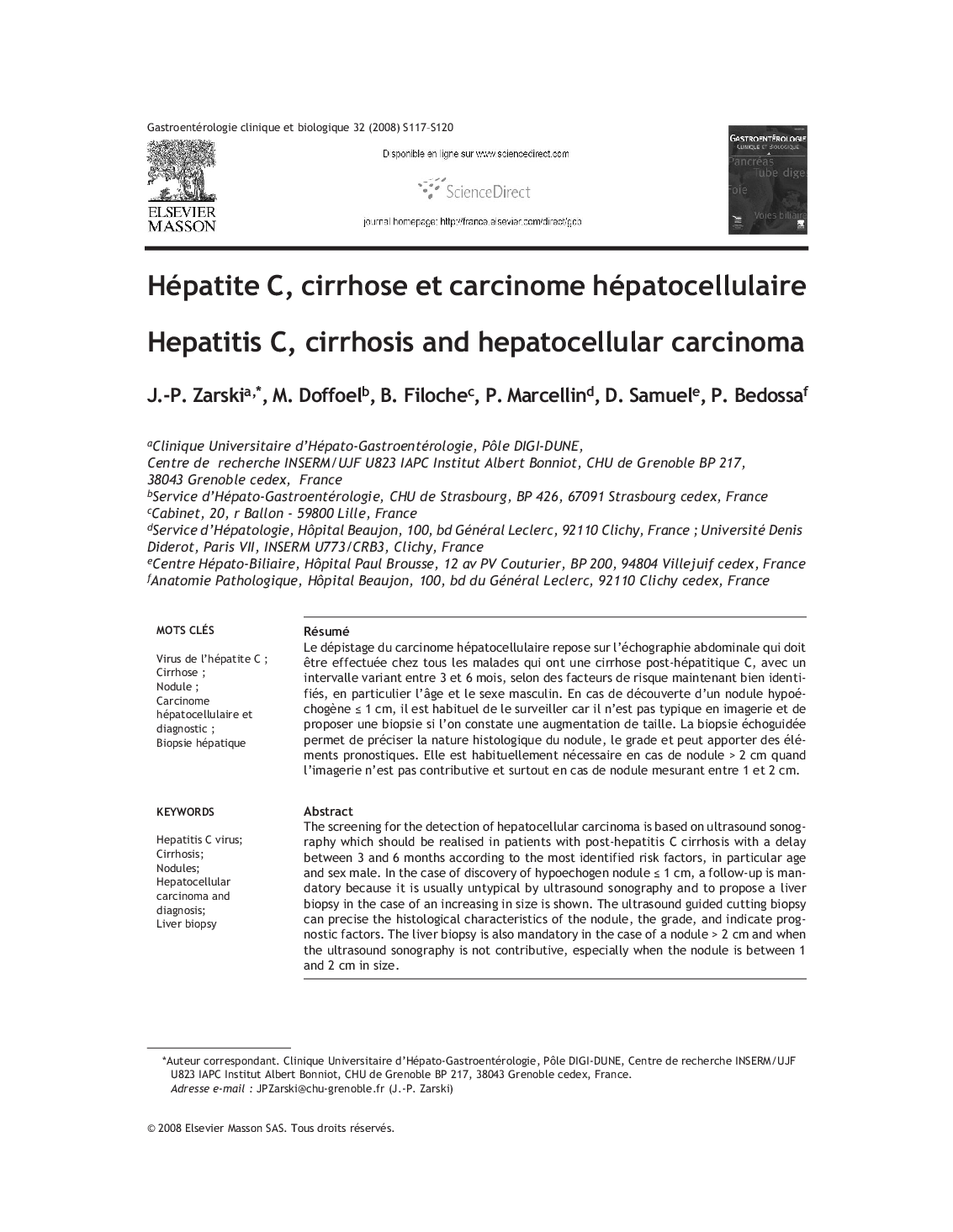| Article ID | Journal | Published Year | Pages | File Type |
|---|---|---|---|---|
| 3291002 | Gastroentérologie Clinique et Biologique | 2008 | 4 Pages |
RésuméLe dépistage du carcinome hépatocellulaire repose sur l’échographie abdominale qui doit être effectuée chez tous les malades qui ont une cirrhose post-hépatitique C, avec un intervalle variant entre 3 et 6 mois, selon des facteurs de risque maintenant bien identifiés, en particulier l’âge et le sexe masculin. En cas de découverte d’un nodule hypoéchogène ≤ 1 cm, il est habituel de le surveiller car il n’est pas typique en imagerie et de proposer une biopsie si l’on constate une augmentation de taille. La biopsie échoguidée permet de préciser la nature histologique du nodule, le grade et peut apporter des éléments pronostiques. Elle est habituellement nécessaire en cas de nodule > 2 cm quand l’imagerie n’est pas contributive et surtout en cas de nodule mesurant entre 1 et 2 cm.
The screening for the detection of hepatocellular carcinoma is based on ultrasound sonography which should be realised in patients with post-hepatitis C cirrhosis with a delay between 3 and 6 months according to the most identified risk factors, in particular age and sex male. In the case of discovery of hypoechogen nodule ≤ 1 cm, a follow-up is mandatory because it is usually untypical by ultrasound sonography and to propose a liver biopsy in the case of an increasing in size is shown. The ultrasound guided cutting biopsy can precise the histological characteristics of the nodule, the grade, and indicate prognostic factors. The liver biopsy is also mandatory in the case of a nodule > 2 cm and when the ultrasound sonography is not contributive, especially when the nodule is between 1 and 2 cm in size.
